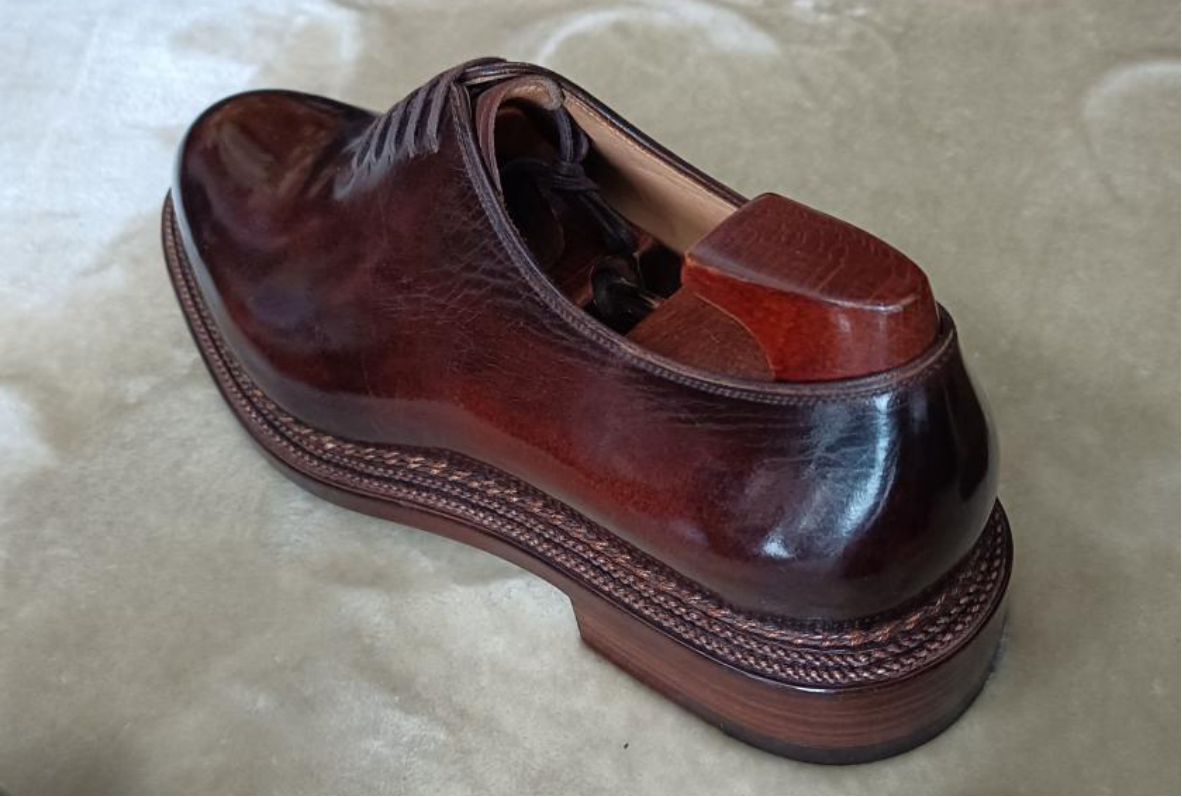Many people may be the same as me, know the brand WM1978 Beijing through Medallion. When in a crowd of foreign top-end brands, its price is even higher. This makes many people curious about it, but because of the price, there are few people who can experience it. Talk about the style, exaggerated color and Norwegian stitches. lasts are more rounded compared to Paolo Scafora, who is also obsessed with Norwegian seams. But after Medallion stopped carrying WM1978 Beijing, the brand was less visible.
1978 is not the year when the brand was founded, but the year when founder Mr. CAO Wei started to work as an apprentice worker at the Beijing No. 1 Leather Shoe Factory, better known as the Beijing Baihua Leather Shoe Factory. Mr. CAO Wei is a very well-known and pioneering figure in China’s welted shoe industry. Many young shoemakers come to pay a visit when they are in Beijing. What he is most known for is his openness. Anyone who comes to communicate, he is willing to teach. This may not be relevant to the enthusiast or consumer, but for the industry, it contributes a lot.
I had contacted Mr. Cao Wei before the shoemaking competition, and I finally had the opportunity to visit WM1978’s workshop and have a face-to-face communication with Mr. Cao Wei through the introduction of a friend.
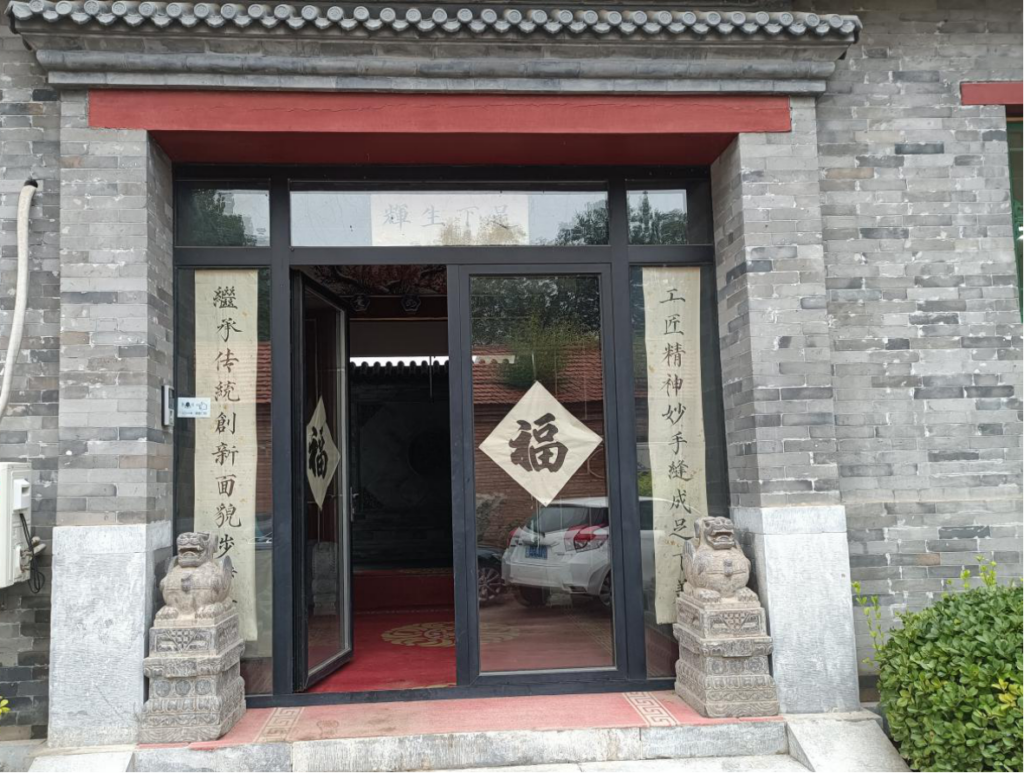
WM1978’s workshop is probably the most luxurious you’ve ever seen. This is because it is a four-square courtyard with greenery in the middle and individual rooms all around.
The entrance is a pair of stone lions and a couplet.
The upper couplet: artisanal spirit of wonderful hands sewn into the beauty of the foot
The next couplet: Inherit the tradition of innovative outlook step by step
Banner: Glory under the feet
This is not exaggerated, because many celebrities such as MA Weidu and Cui Yongyuan are all clients of WM1978, but you never heard Mr. CAO Wei use this for publicity.
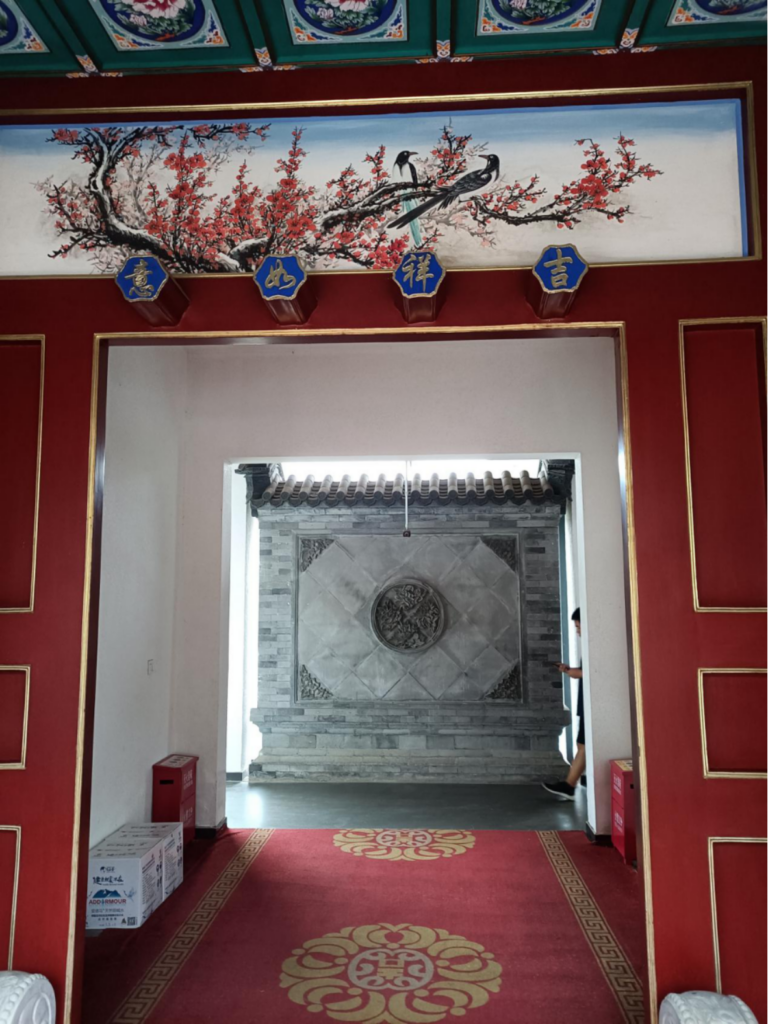
It is traditional Beijing architecture when you enter the door, and it should be very rare to find such a working environment.
We were first led to the parlor.
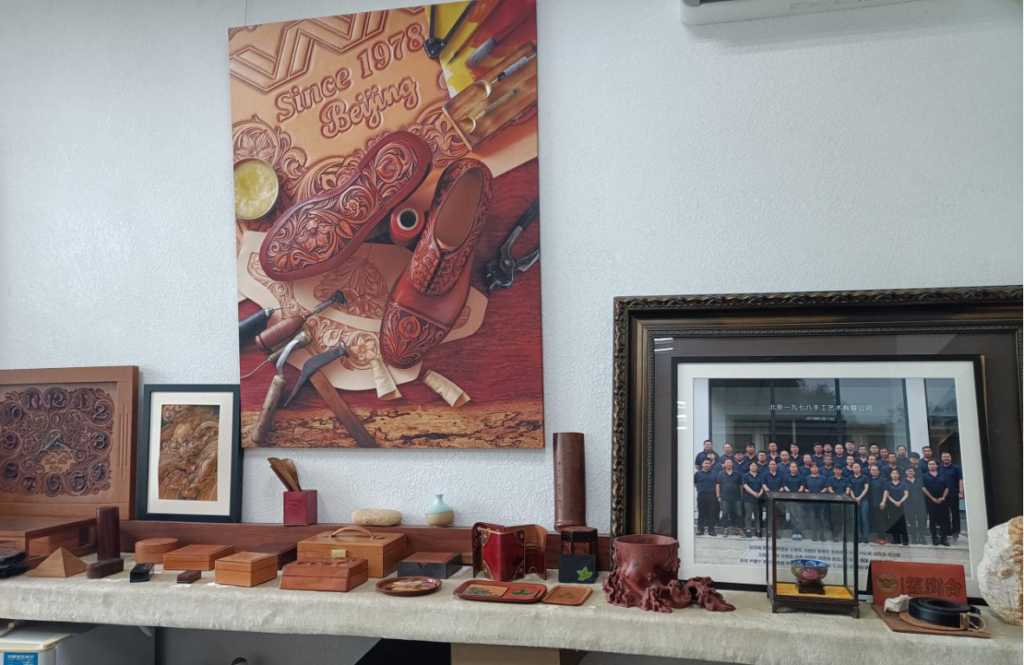
On one side are leather sculptures and a group photo of the employees.
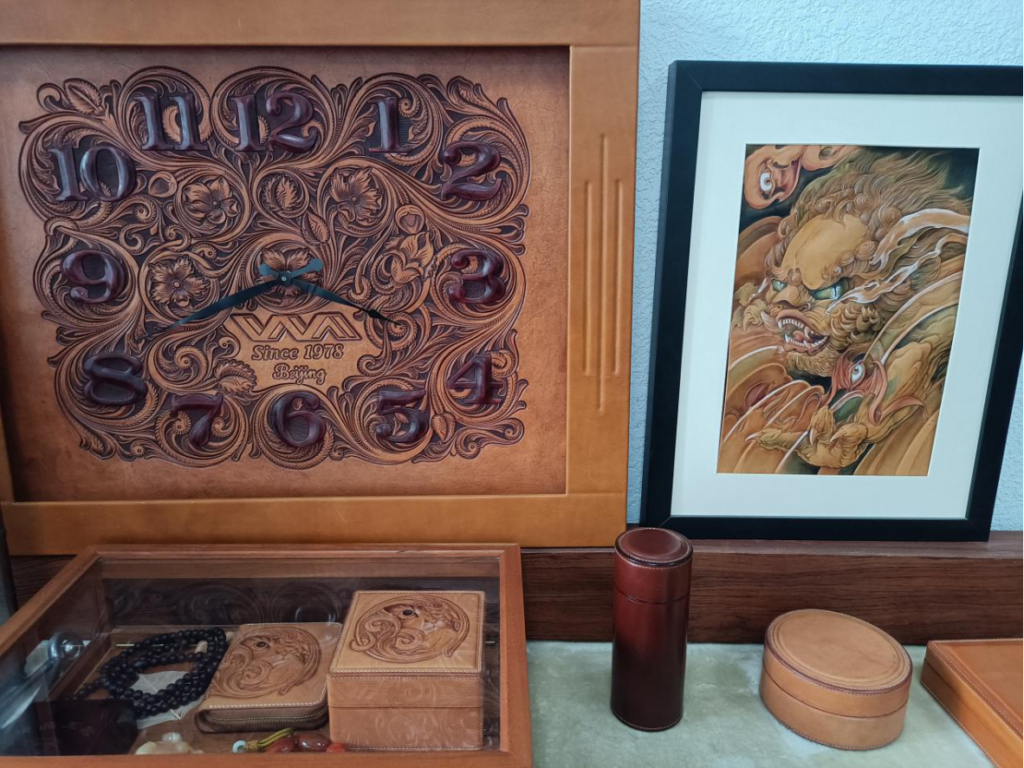
Many small leather products are very interesting, such as shoehorn made of leather, which is the first time I saw it, I love it so much.

On the other side, leather shoes are displayed. The leather sculpture soccer is definitely a hit.
The pair of shoes in the photo on the wall are on the display table.
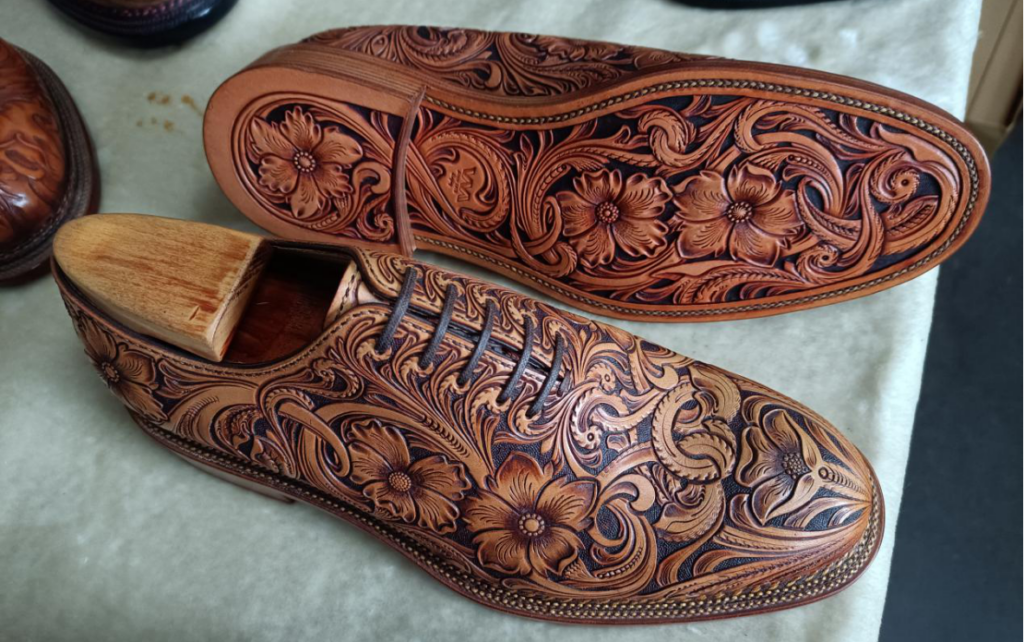
The leather carving on the upper of these shoes is already a sight to behold, and with the solid and clean Norwegian stitching and finally the overall leather carving on the sole, this is definitely a work of art. This pair of shoes won the first prize in a competition in Japan.
I first thought this pair is a seamless whoelcut oxford! But in fact, the seams are hidden by the texture of the leather carving, and even when the parts are pointed out, I can’t tell.
Leather shoe lovers, whether they like WM1978’s style or not, from a craftsmanship standpoint, these are definitely the very best of the best.
Other shoes, although not as extreme as this pair, but the craftsmanship of each pair should not be underestimated.
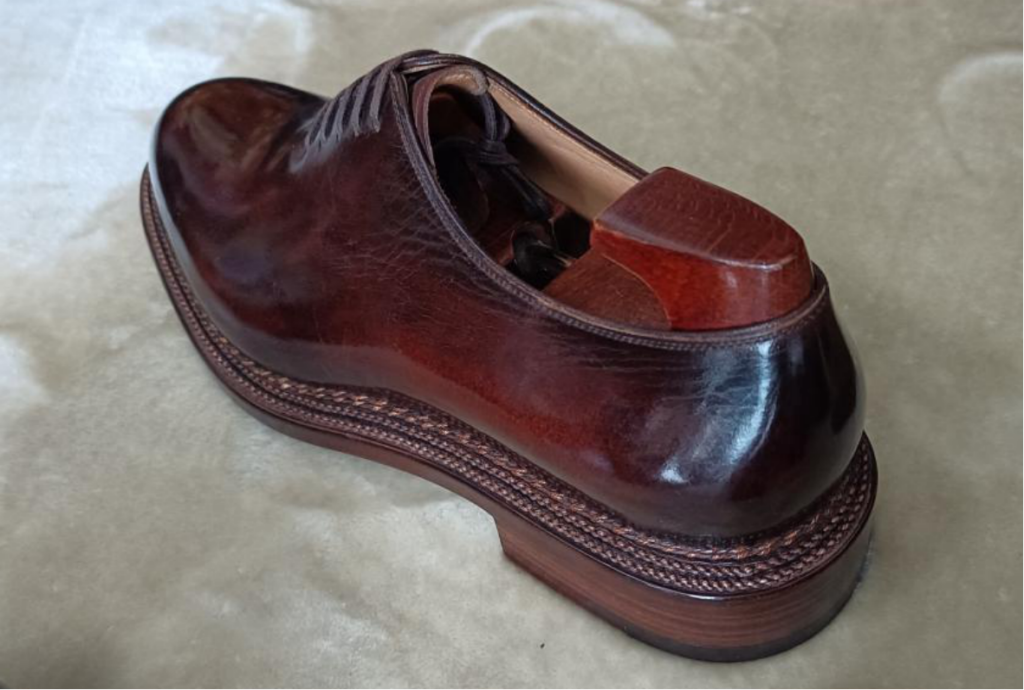
For example, a seamless wholecut oxford paired with multiple layers of Norwegian stitching that you are unlikely see on other shoes.
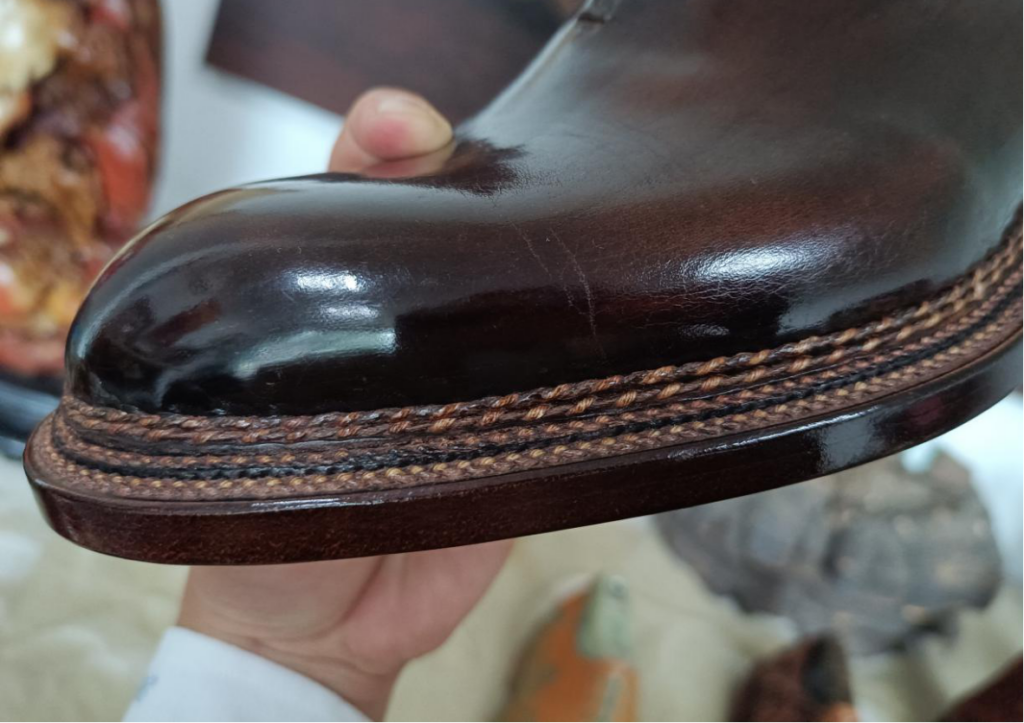
Not only is it multi-layered, but it is also two colors with the same strand, which is what I meant by the title of the article, the pursuit of the ultimate in craftsmanship.
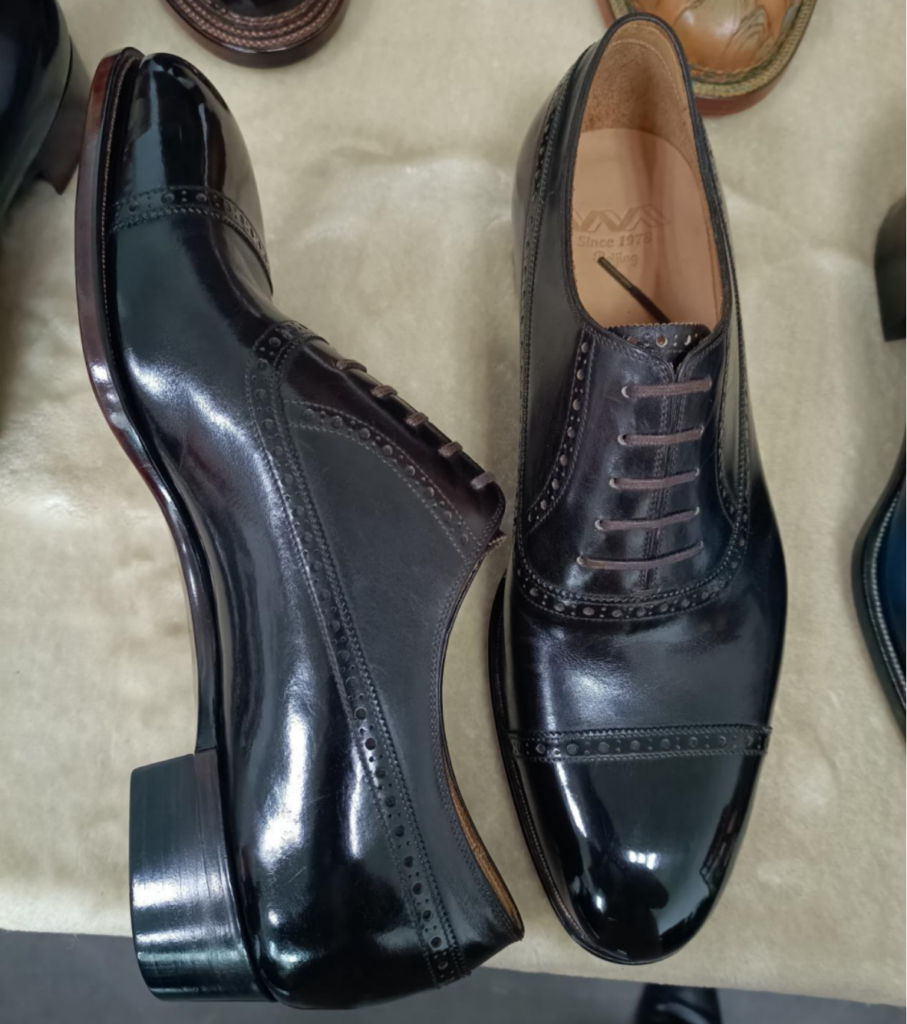
This pair of cap toe Balmoral brogued Oxford should be considered quite mainstream shoes. So where is the limit of craftsmanship? From this angle, you can only see the broken heel, but there are two worthy mentioning.

When something is really extreme, you don’t want to use any adjectives to make an impression, because it says it all by itself. This is achieved by pure hand work, not any other way of crafting.
Another point is SPI, we use centimeters as the unit of measurement, 9 stitches per cm, you can convert to about 23 stitched per inch. Mr. CAO Wei explained that it is to grind the needle very fine by hand, and the workers must stitch very patiently.
Is this not the pursuit of the limits of craftsmanship?
Next, we went on to visit the workshop along the process.
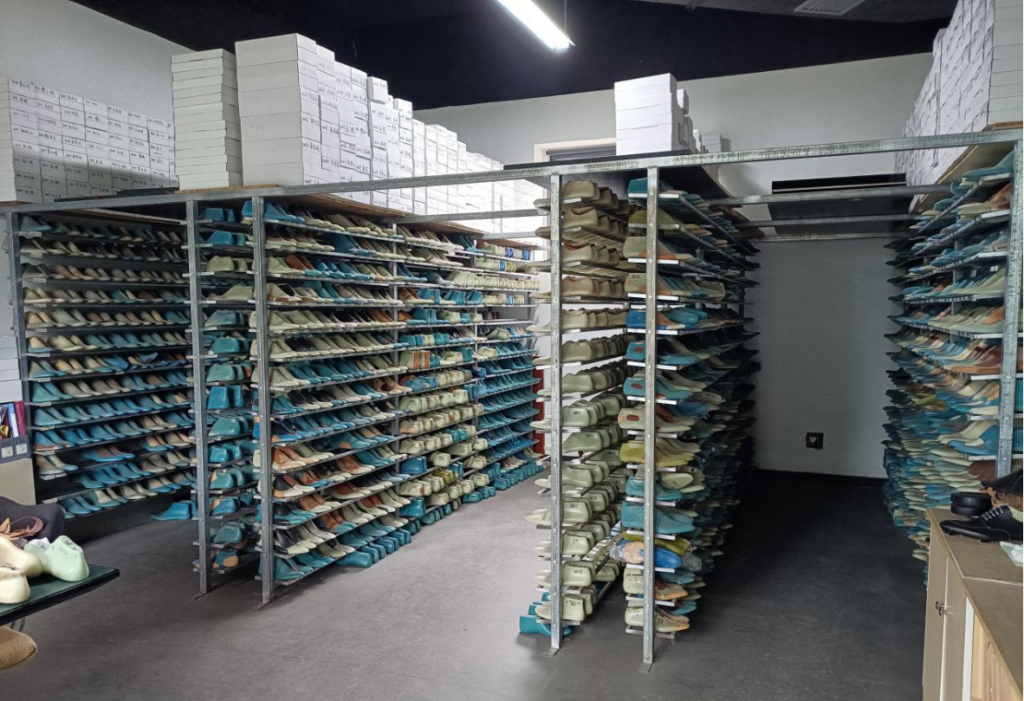
Last room, in terms of number and scale, should be more than most workshops, but compared with the factory, it is still less. There are many custom-made lasts for customers, and I can see the names on them, and many of them are famous people.

There are many things about foot health on the other wall and this is something that Mr. CAO Wei cares deeply about. We’ll talk more about that later.
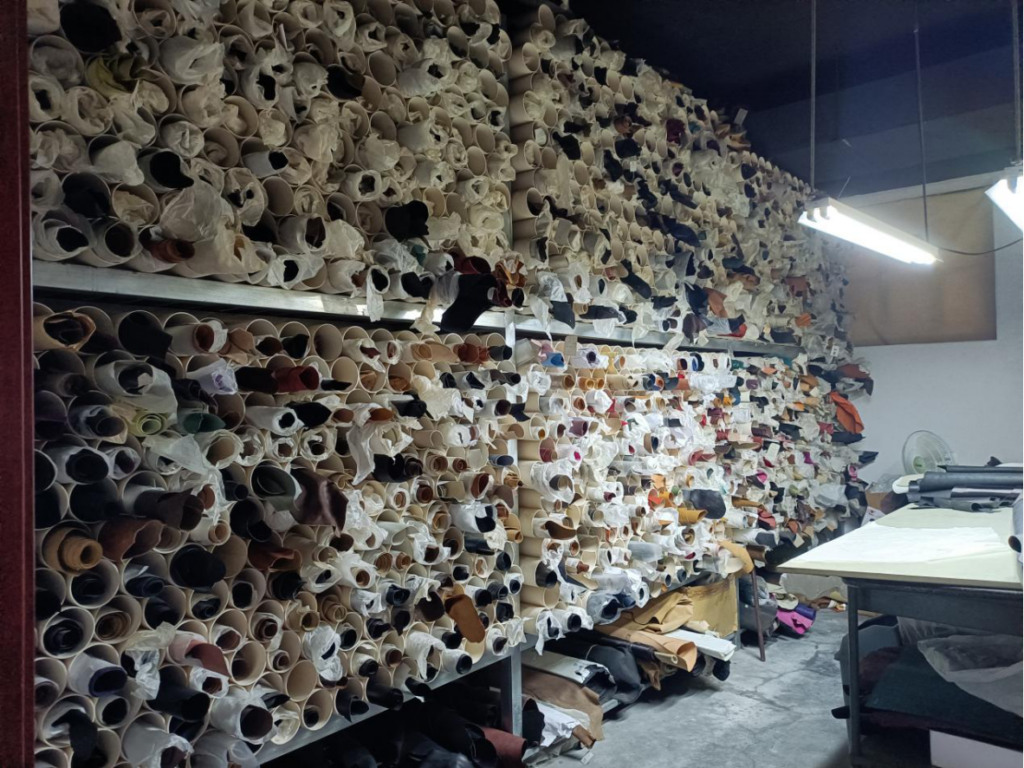
Then there is the leather storage room.
This amount is really amazing, and even gives the feeling of collection fetish. All kinds of leather, almost everything. I think it is a privilege even for bespoke service.
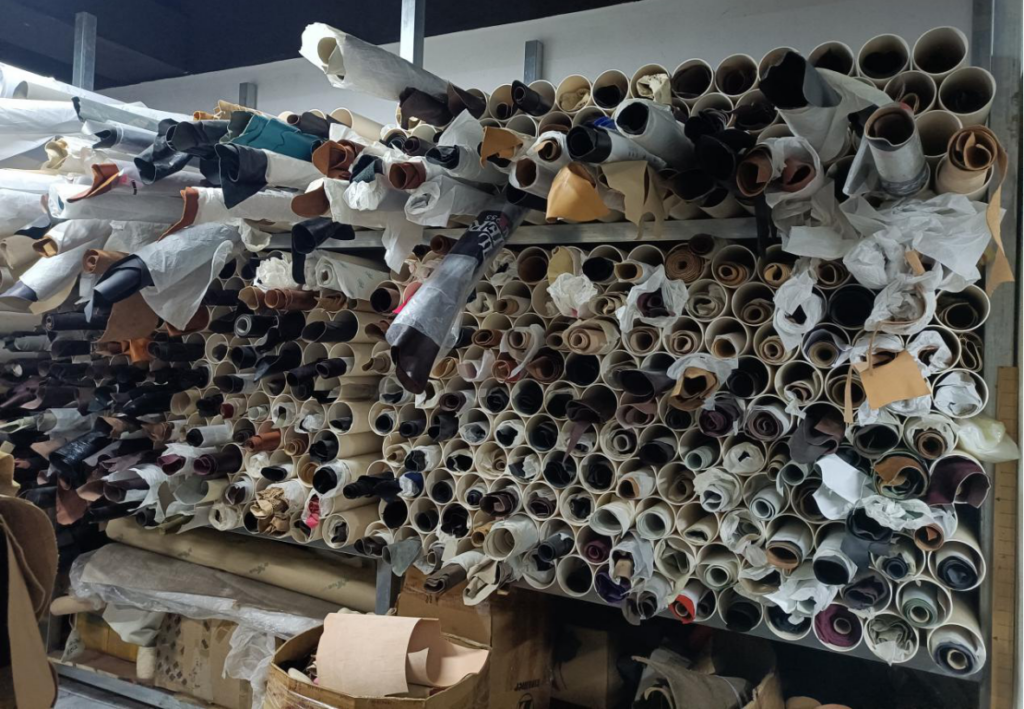
There are many more in another room.
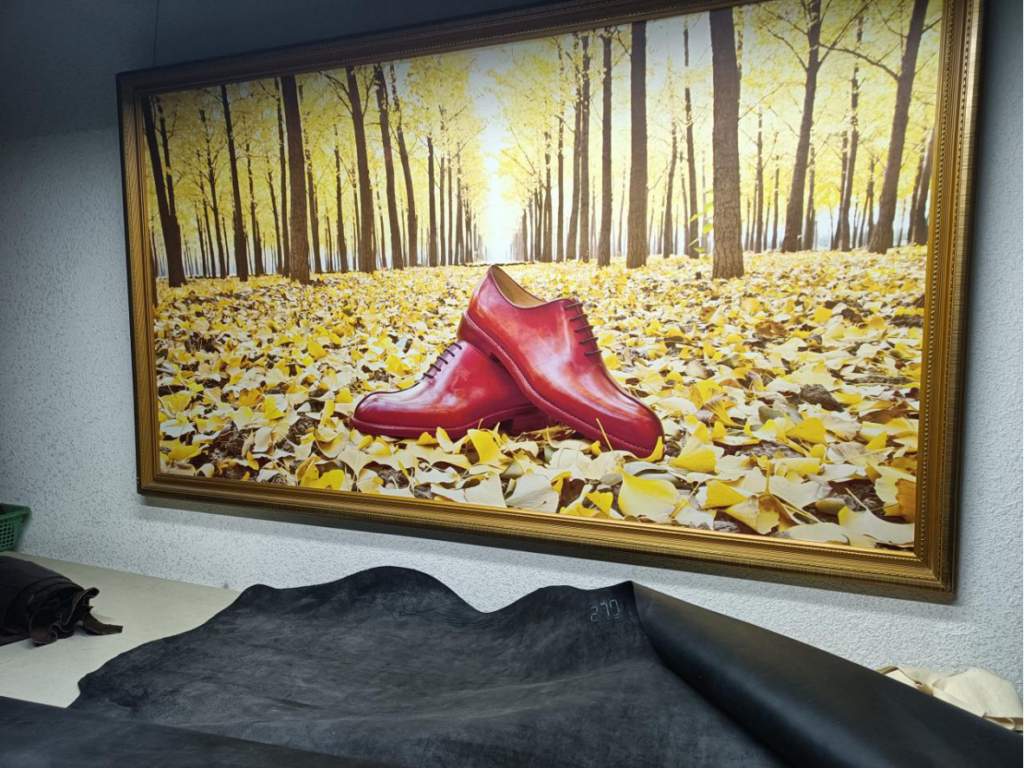
On the wall of the leather storage room, this photo is interesting, the Viennese style, which is called Ersherzog by Maftei. I didn’t expect to see that WM1978 Beijing has this model as well.
As mentioned earlier, Mr. CAO Wei is very concerned about the role of shoes in foot health, specifically arch support. So how is arch support achieved? There are many ways, such as the extension of stiffener to the waist of the shoe or add a sponge pad at the front of sock lining. But bespoke shoes achieve it by shaping midsole.
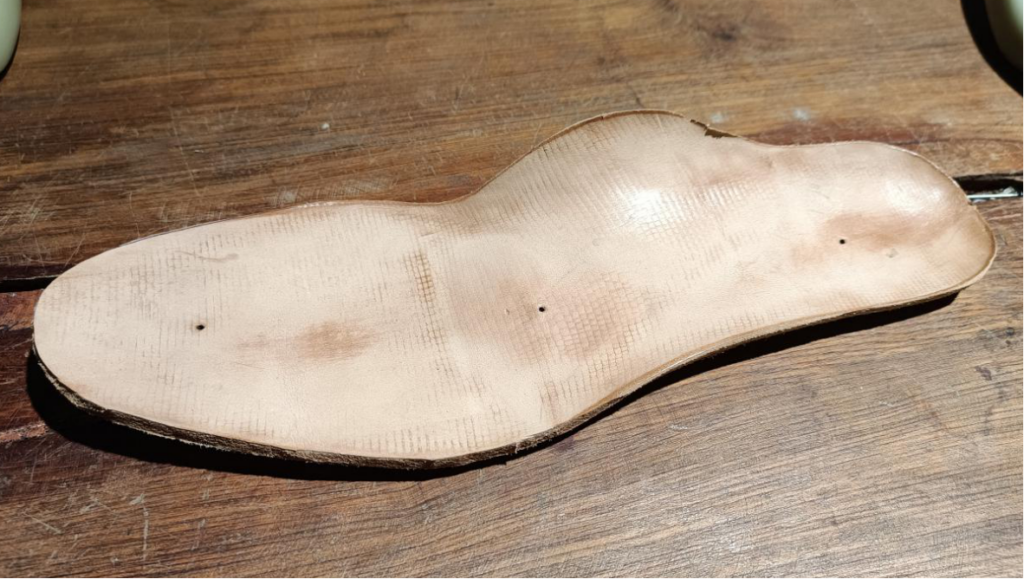
This is the midsole that has been molded.
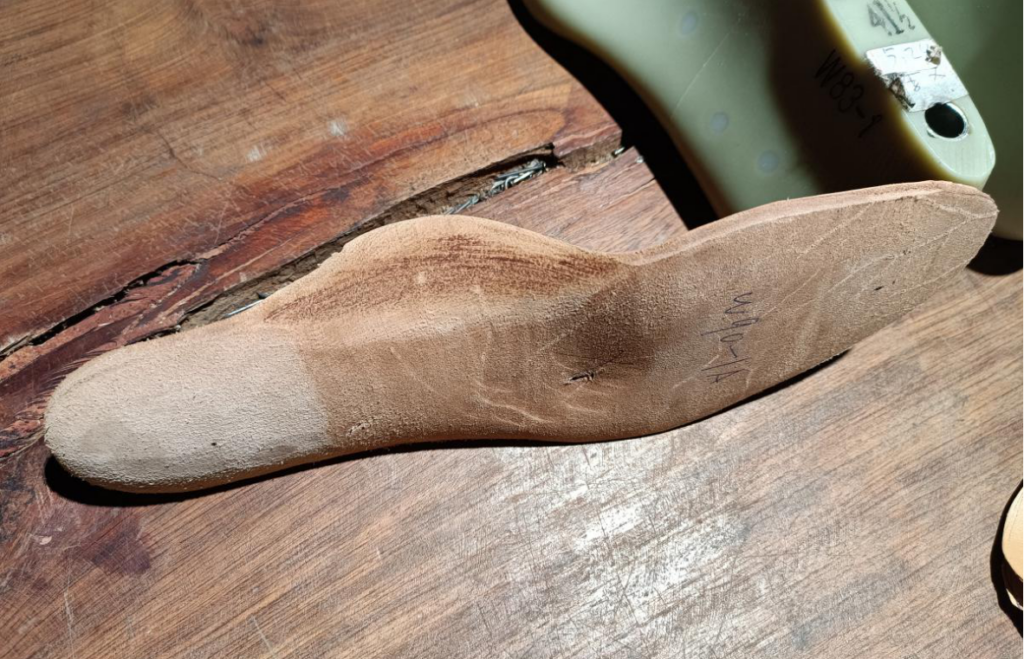
The shape of the foot arch is formed.
So how is shaping achieved?
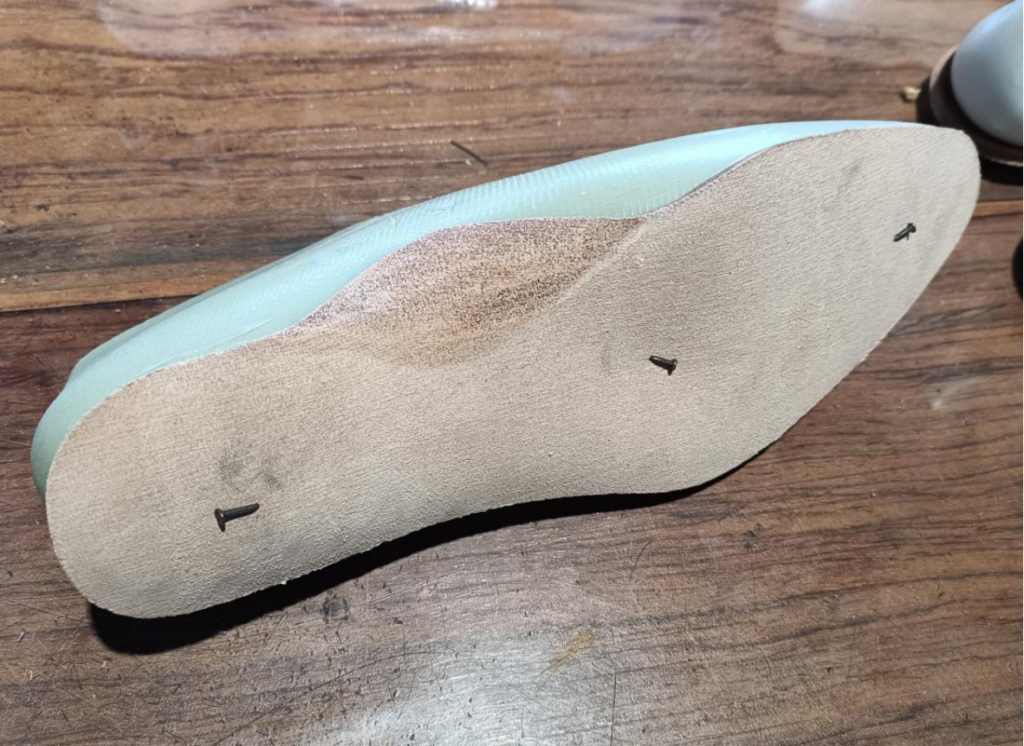
Make a last with more pronounced arch, then fix the midsole on it and wet it, and let it set with a few days.
After the midsole is ready, it can be attached to the last for upper lasting.
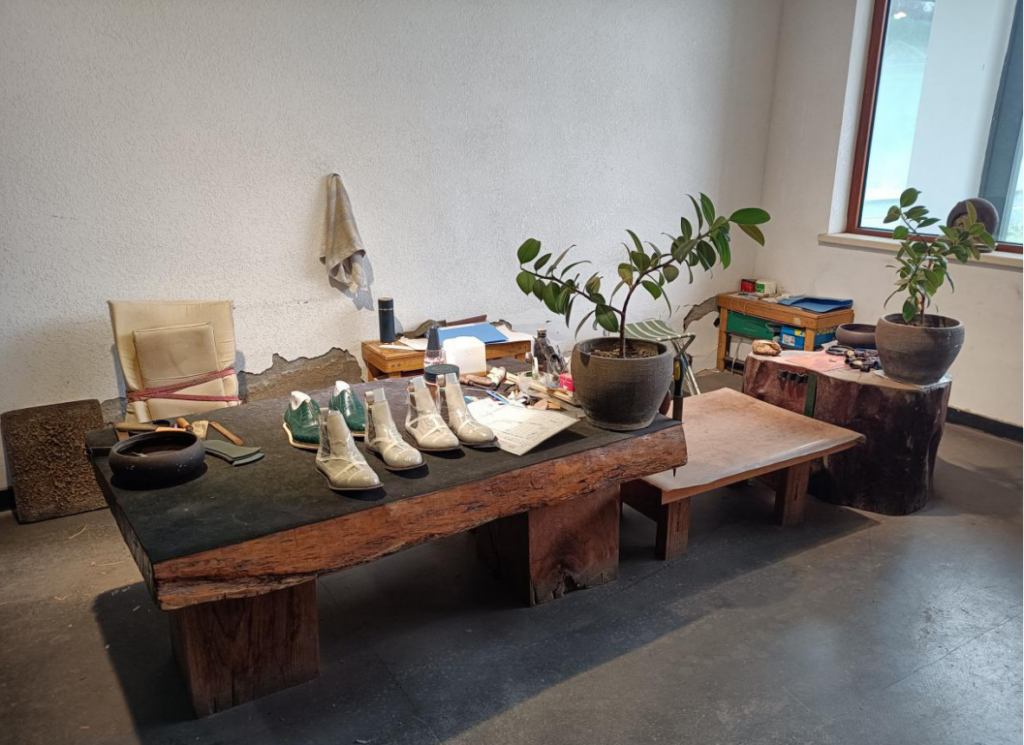
This is a workstation, and the craftsman rested at noon. I think such a working environment is an expression of respect to craftsmen.
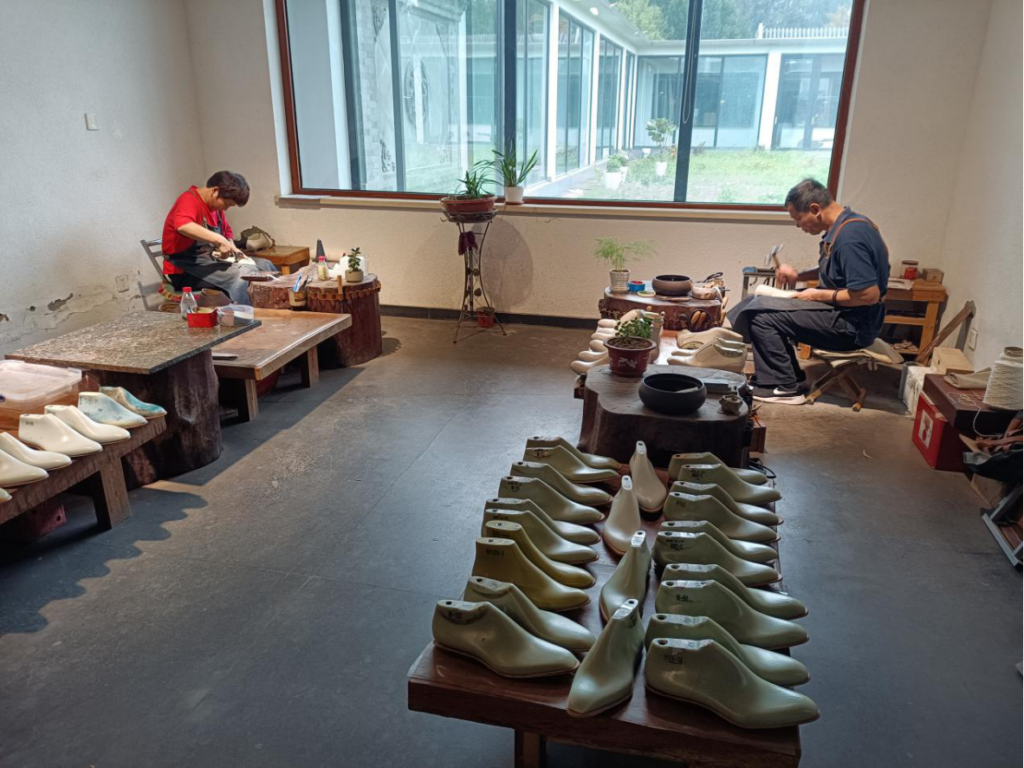
In the afternoon, the craftsmen came back, and I proceeded the visit.
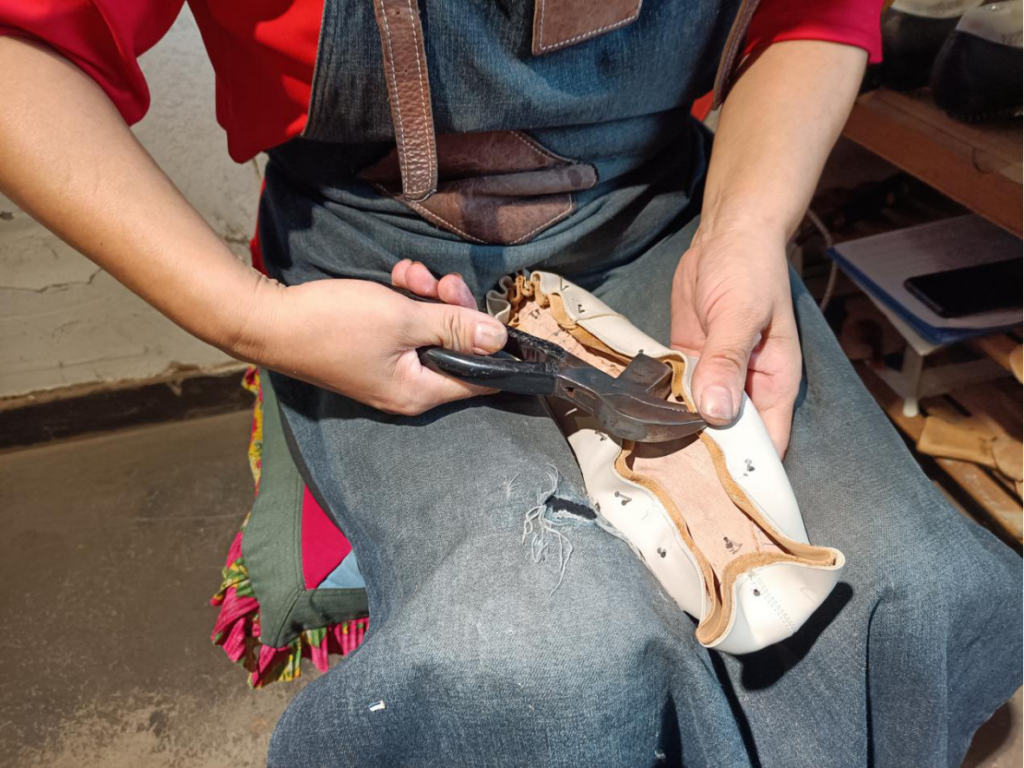
Handlasting. The purpose is to make every part of the upper has enough tension to completely express the shape of last.
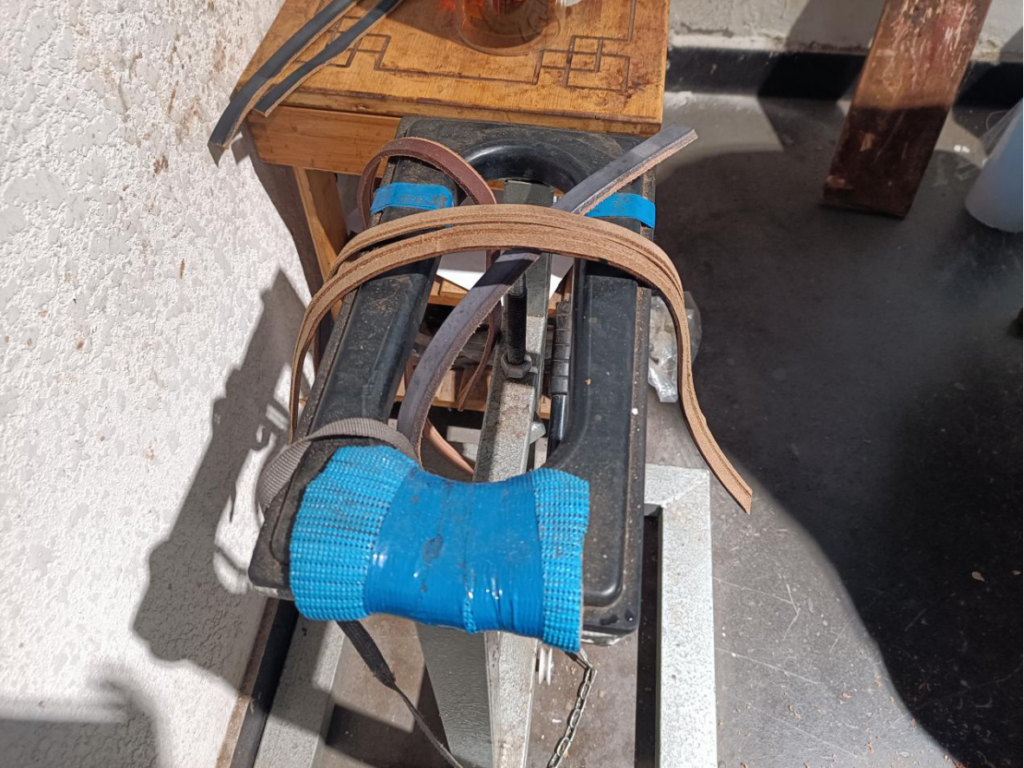
The upper is lasted, then it is handwelting.
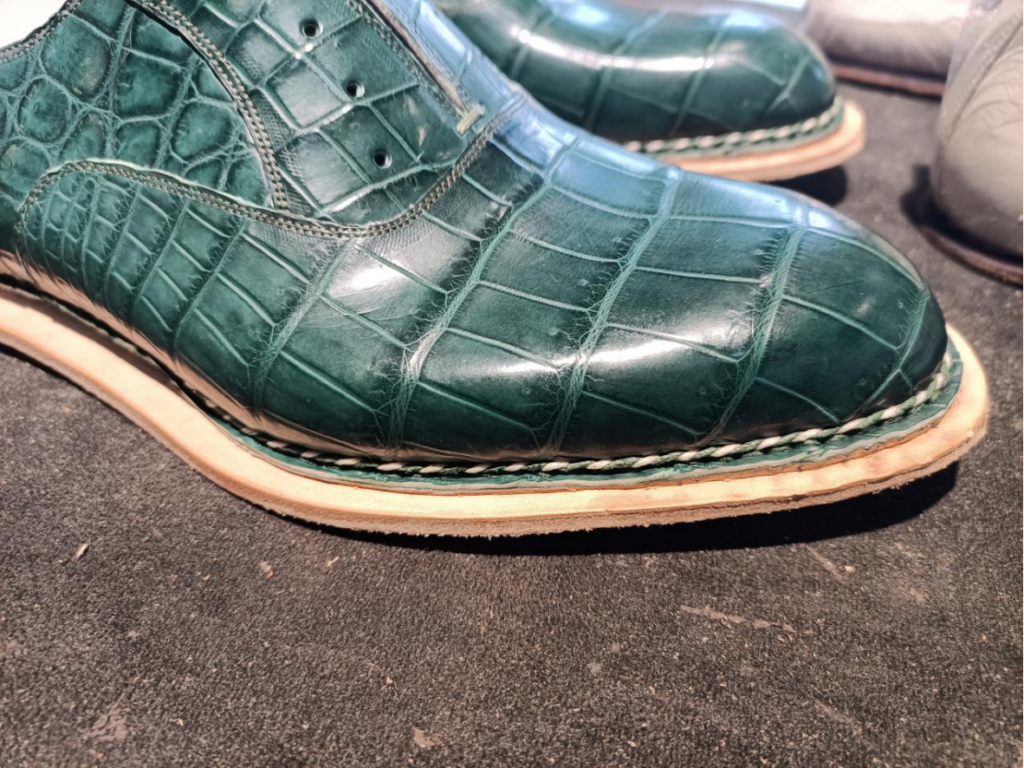
This pair has finished Norwegian stitches, and the next step is to stitch outsole on.
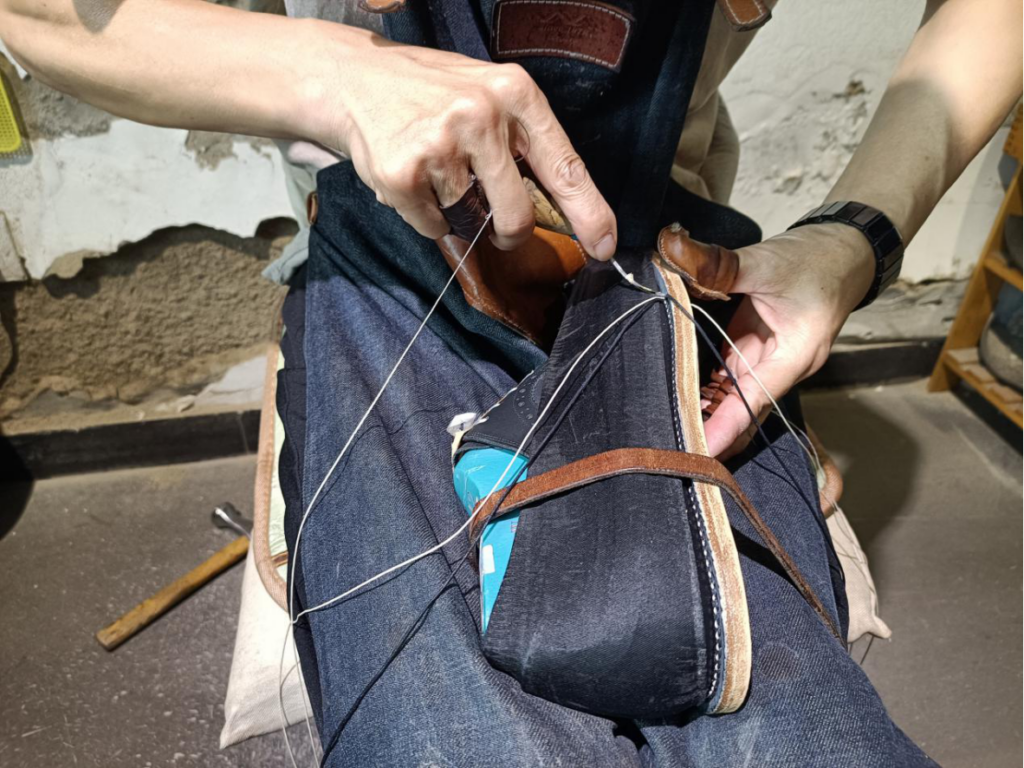
Aforementioned high SPI is achieved in this step. First, a thin needle is used to pierce welt and outsole.
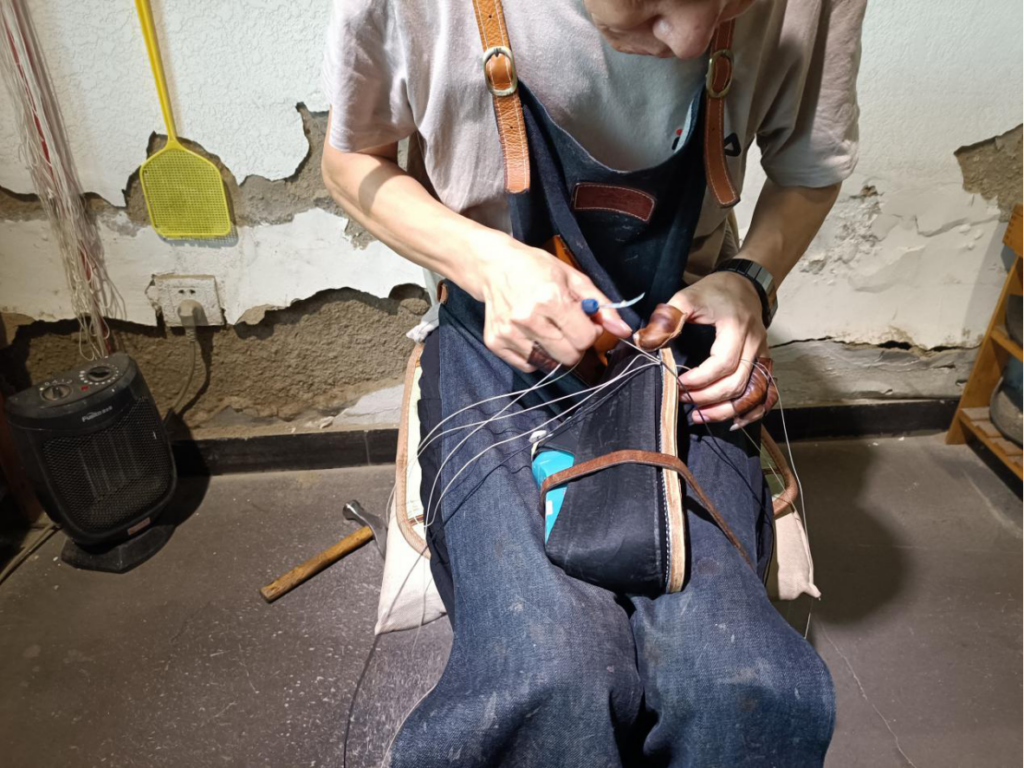
The threads are passed through the needle holes from each side.
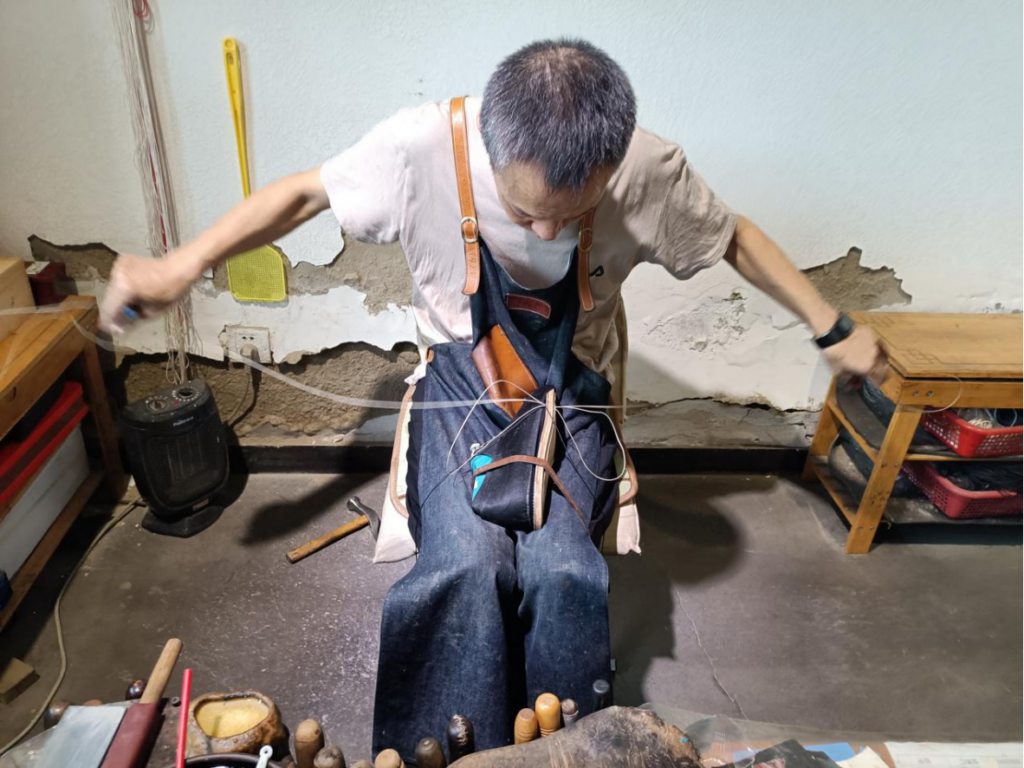
After winding, pull tight.
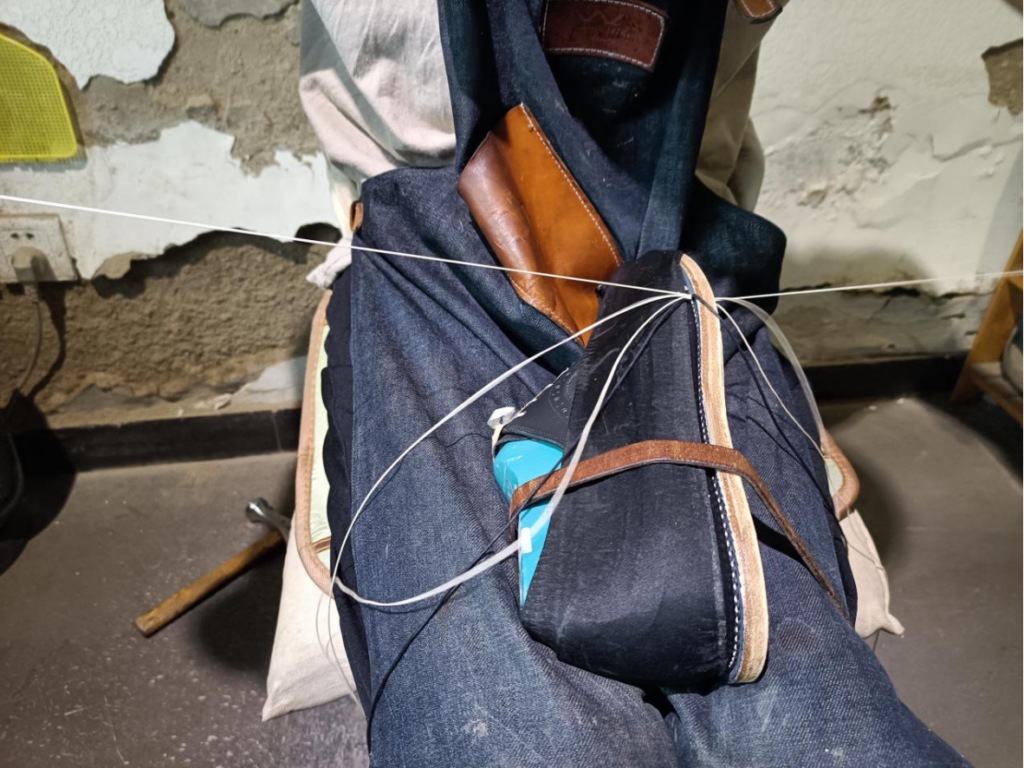
One stitch that we observed on the shoes is done.
The latter processes are hiding the thread, coloring the sole, and upper finishing. As welted shoes, the most important process is stitching.
Then it is the showroom. There is a huge variety of shoes here, from the most conservative to the most high-profile ones.

These are the more iconic styles of WM1978, exaggerated color with Norwegian stitching, and a very unique upper design!
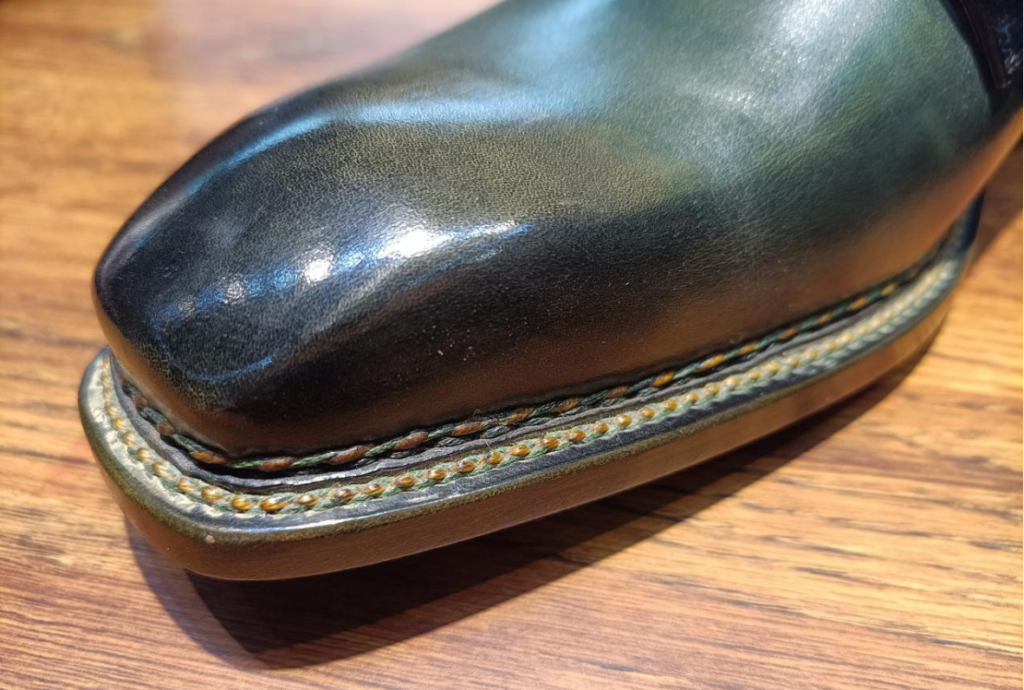
Norwegian seams on each pair, if you look closely, you can see that it is not simply a Norwegian seam, but a Rolls Royce of Norwegian seams, so to speak.
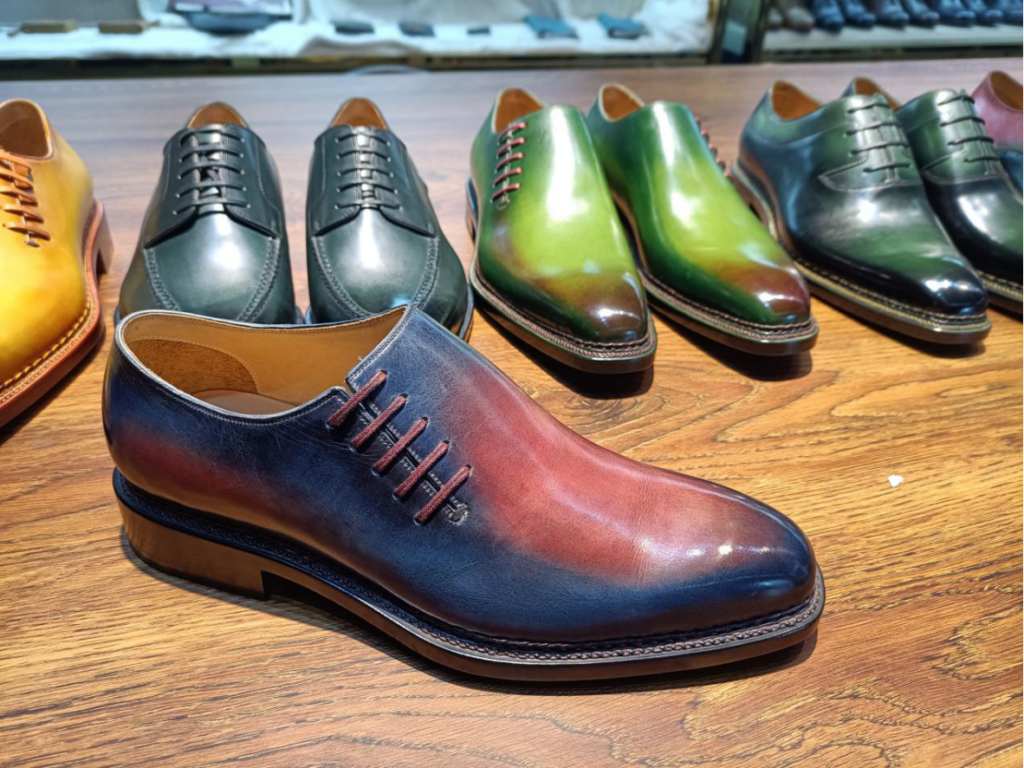
Side Lace, a style that almost no one does in China, but WM1978 Beijing has long had.
In terms of innovation, whether it’s craftsmanship or design, WM1978 is no slouch.
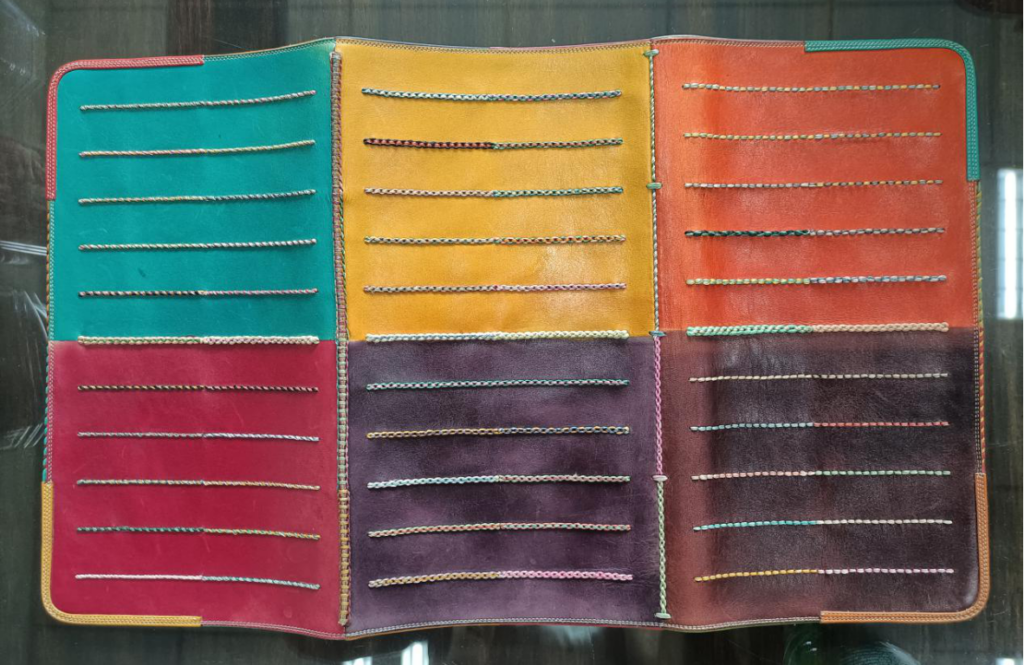
This is the different stitching features that were shown to me. Whether it’s the upper stitching, the outsole stitching, or the Norwegian stitching, WM1978 is striving for infinity.
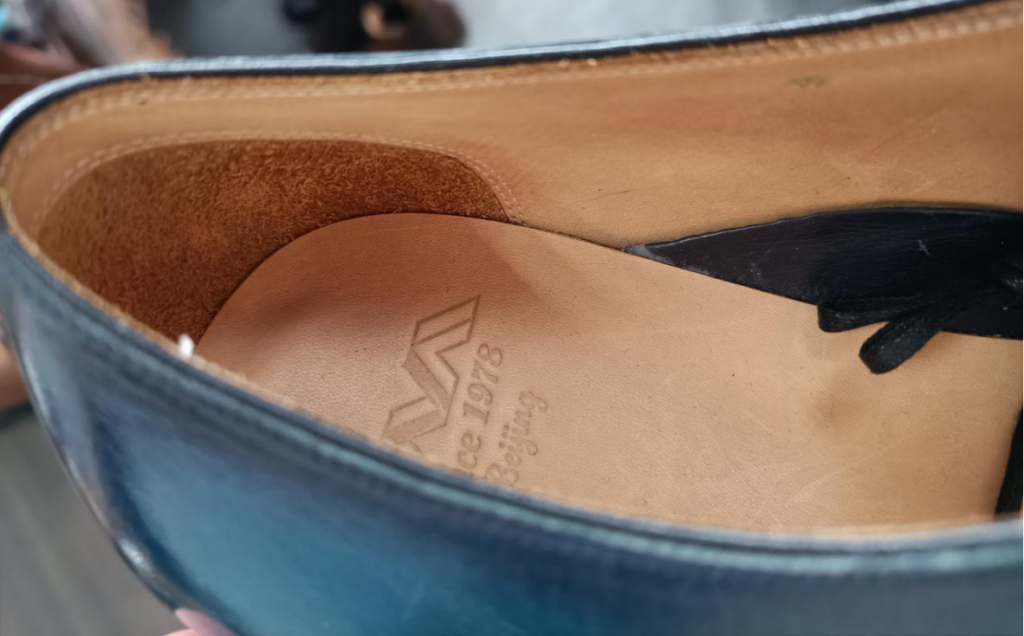
Mr. CAO Wei’s pursuit of craftsmanship and quality is also evident in places that people don’t pay much attention to, such as lining, which is also double-stitched.
In the showroom, I tried on WM1978 shoes, arch support is indeed very obvious. This experience is not transferable by description that you have to try it yourself.
Mr. CAO Wei showed me the changes that happened to his feet after he wore WM1978’s shoes.
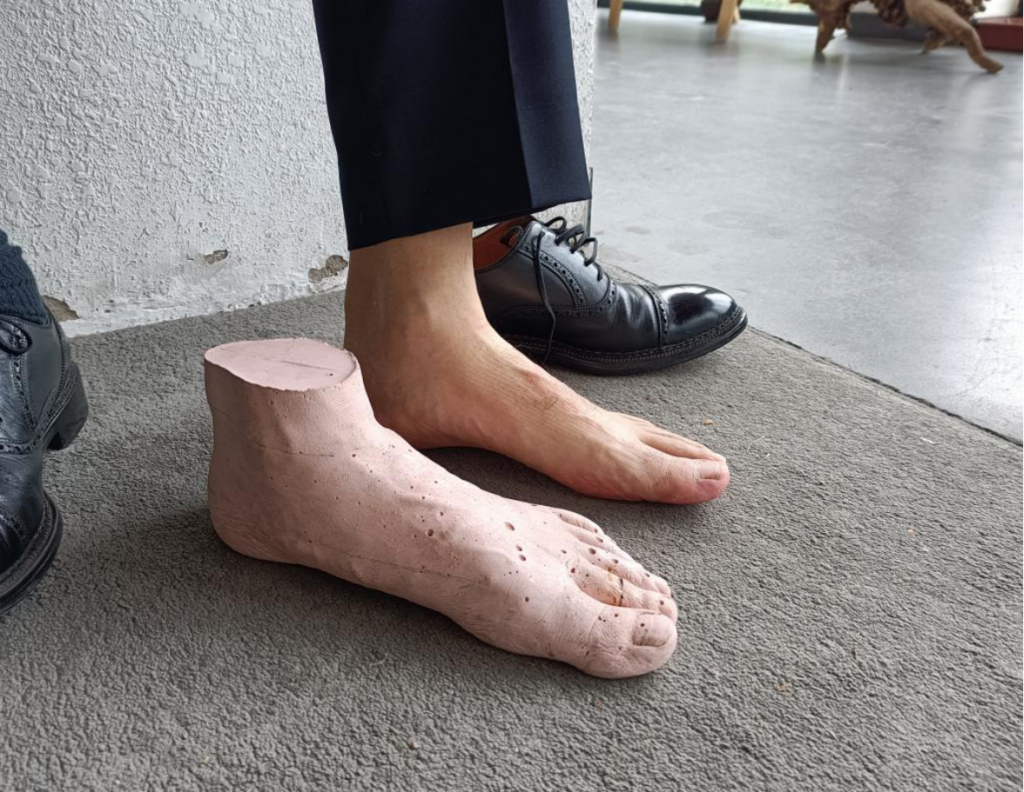
This foot model, which was Mr. CAO Wei’s own foot about 2 years ago, arch was much collapsed compared to his current foot.
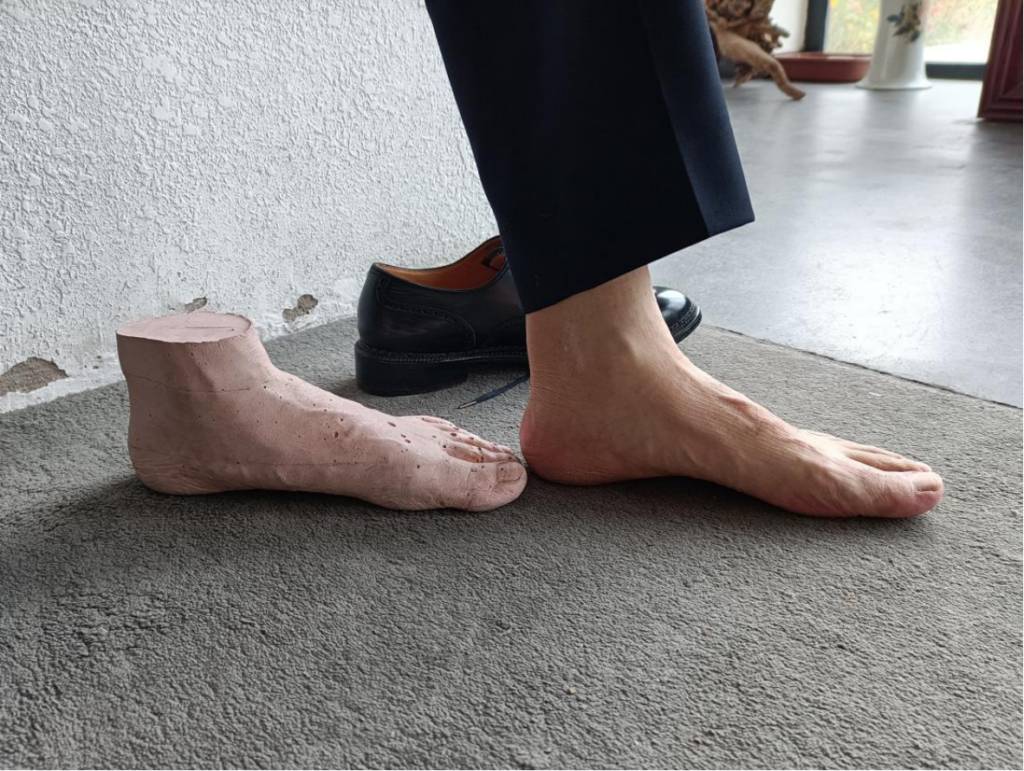
Mr. CAO Wei was not flat-footed when he was young, but with age, arch gradually collapsed. He communicated with a professional orthopedic specialist and tried making shoes with prominent arch support, and he was pleased to have such an effect.
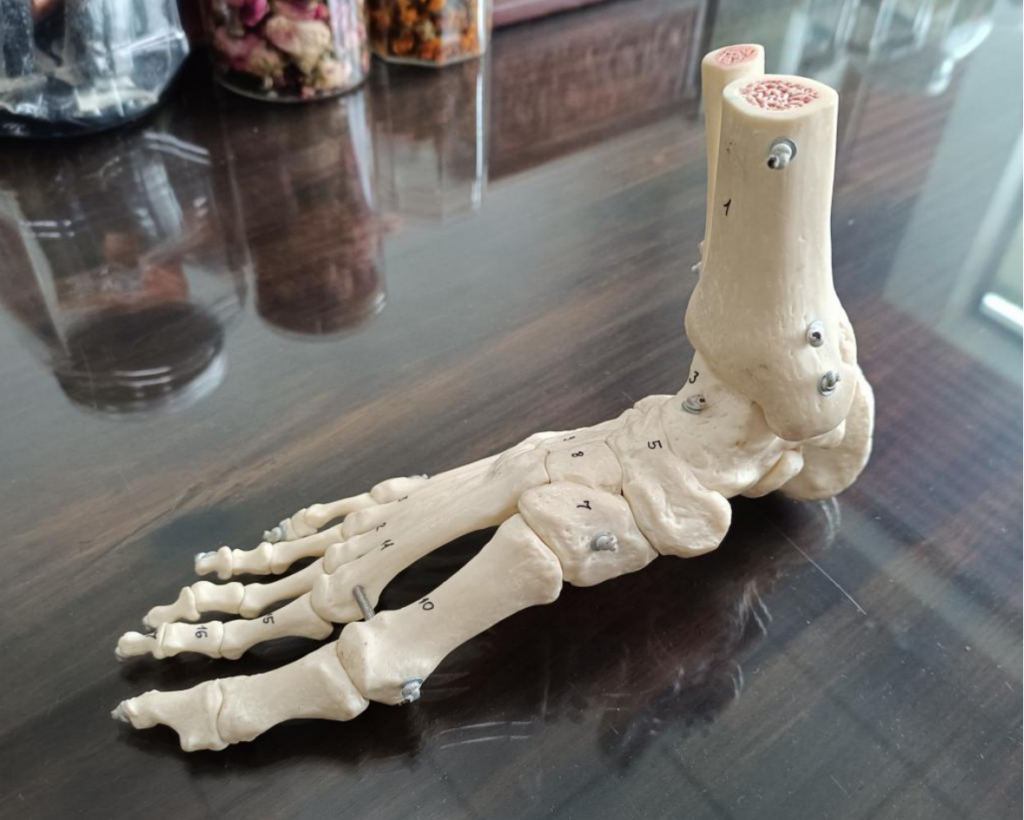
This model of orthopedics is the gadget that Mr. CAO Wei loves to play with. I don’t know of any other manufacturer or brand that pays so much attention to foot health.
Once WM1978 was too aggressive in that style, making it commercially difficult to get most people’s sponsorship, so it returns to traditional and classic models and lasts, trimming down to three lasts, from left to right are 61, 81 and 83.
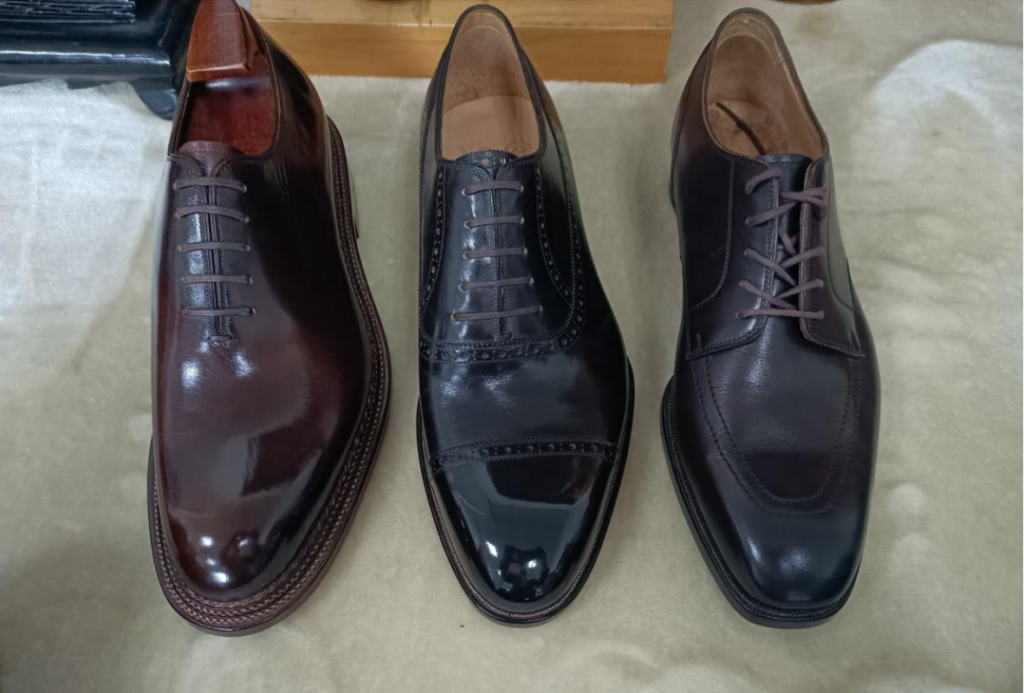
I am very fond of conservative and boring shoes and very much in favor of this step of WM1978.

Each pair of WM1978 has a number on the tongue, which represents when this model was first produced by this workshop, and there is a database recording all this information containing of last, leather, size, and even customer information. Another very poking point.
Summary
Purely on the WM1978 brand, I think it is the limit of craftsmanship and the perseverance of foot health.
But it is also this highlights that make it struggling in the mainstream market. To push the limits of the process, then the process is constantly changing. The shoes today are different with the shoes months later, due to process improvement, and the expectations of buying shoes become overwhelming. Most consumers cannot tell the SPI from 22 to 23 and don’t appreciate the efforts.
So this sentiment can only be bought by people who are aware of it and with a mindset of supporting art.
Mr. CAO Wei is a person that perhaps many people in the industry know, but very few shoe enthusiasts know, not to mention mainstream consumers. I think this is the function of my blog, I hope to let these pursuing craftsmen, leave their own stories. I am not the most optimistic or pessimistic about the business prospects of welt shoes, but for most of these people in the industry, I feel that I admire them and am willing to spend my life helping.

